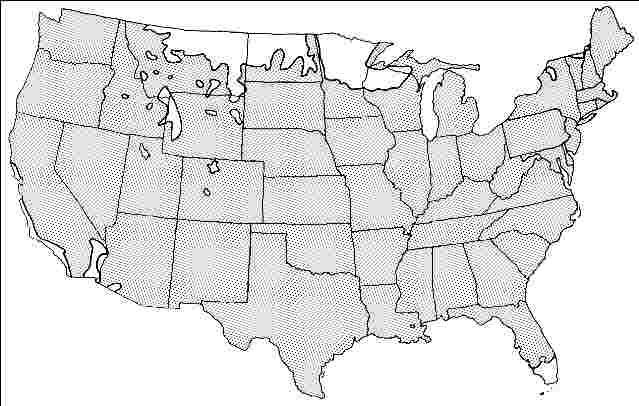Introduction
White Poplar is a fast-growing, deciduous tree which reaches 60 to 100 feet in height with a 40 to 50-foot-spread and makes a nice shade tree, although it is considered short-lived. The dark green, lobed leaves have a fuzzy, white underside which gives the tree a sparkling effect when breezes stir the leaves. These leaves are totally covered with this white fuzz when they are young and first open. The fall color is pale yellow. The flowers appear before the leaves in spring but are not showy, and are followed by tiny, fuzzy seedpods which contain numerous seeds. It is the white trunk and bark of white poplar which is particularly striking, along with the beautiful two-toned leaves. The bark stays smooth and white until very old when it can become ridged and furrowed. The wood of White Poplar is fairly brittle and subject to breakage in storms and the soft bark is subject to injury from vandals. Leaves often drop from the tree beginning in summer and continue dropping through the fall.

Credit: Ed Gilman
General Information
Scientific name: Populus alba
Pronunciation: POP-yoo-lus AL-buh
Common name(s): White Poplar
Family: Salicaceae
USDA hardiness zones: 4A through 9B (Fig. 2)
Origin: not native to North America
Invasive potential: invasive non-native
Uses: reclamation; shade
Availability: somewhat available, may have to go out of the region to find the tree

Description
Height: 60 to 100 feet
Spread: 40 to 60 feet
Crown uniformity: irregular
Crown shape: oval
Crown density: open
Growth rate: fast
Texture: coarse
Foliage
Leaf arrangement: alternate (Fig. 3)
Leaf type: simple
Leaf margin: lobed, undulate, sinuate/undulate
Leaf shape: star-shaped, elliptic (oval)
Leaf venation: palmate
Leaf type and persistence: deciduous
Leaf blade length: 2 to 4 inches, 4 to 8 inches
Leaf color: green
Fall color: yellow
Fall characteristic: not showy

Flower
Flower color: yellow
Flower characteristics: not showy
Fruit
Fruit shape: elongated
Fruit length: less than .5 inch
Fruit covering: dry or hard
Fruit color: white/gray
Fruit characteristics: does not attract wildlife; not showy; fruit/leaves a litter problem
Trunk and Branches
Trunk/bark/branches: branches don't droop; showy; typically one trunk; thorns
Pruning requirement: needed for strong structure
Breakage: susceptible to breakage
Current year twig color: gray
Current year twig thickness: medium
Wood specific gravity: unknown
Culture
Light requirement: full sun
Soil tolerances: clay; sand; loam; alkaline; acidic; well-drained
Drought tolerance: high
Aerosol salt tolerance: high
Other
Roots: can form large surface roots
Winter interest: no
Outstanding tree: no
Ozone sensitivity: unknown
Verticillium wilt susceptibility: unknown
Pest resistance: sensitive to pests/diseases
Use and Management
White Poplar should be grown in full sun and tolerates almost any soil, wet or dry. Suckering may be a problem on stressed trees but those growing vigorously are usually not bothered. In areas with much air pollution and soot, the fuzzy white undersides of the leaves may attract and hold dirt and dust making them unattractive.
It's large size and brittle wood limit it to open space plantings such as parks and landfill sites.
The cultivar `Bolleana' has a columnar growth habit and irregularly-lobed leaf margins and `Pendula' has a weeping form. `Bolleana' may be the most commonly planted cultivar.
Pests
This tree usually has not pests of major concern, but occasionally leafhoppers bother it. There are many potential problems.
Diseases
Crown gall and trunk cankers can be troublesome.